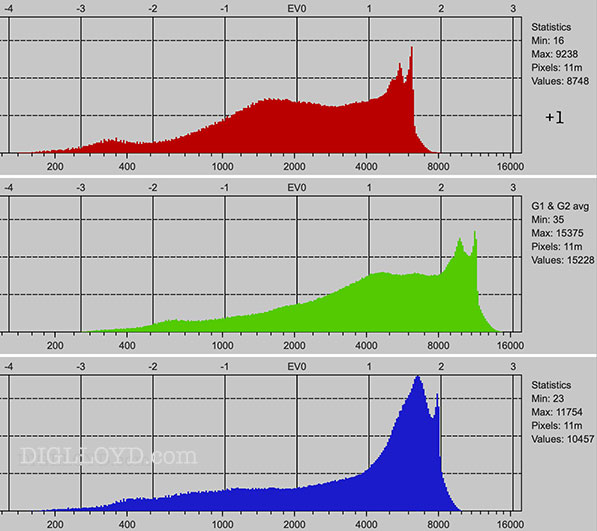How do you get an ideal exposure for RAW capture? ETTR
re: post processing and Adobe Camera Raw
re: ETTR

ETTR = Expose To The Right: increasing exposure for RAW capture so as to minimize sensor noise, maximize dynamic range. The term refers to a histogram pushed right.
ESTR = Expose Somewhat To Right: increase exposure but don’t get greedy!
How do you get an ideal exposure for RAW capture?
I’m not entirely sure. Please see these previous posts.
Color Shift when Using Optimal ETTR (Birch Trees in Winter)
ETTR Too Much of a Good Thing? HARD to Get it Right
“Baseline Exposure” Boost in RAW Converters can Whack Color
Just add more exposure? yes, but carefully
UPDATE: I was fooled by Sony’s Lossless Comp (M) format, having inadvertantly set the camera to that (not sure how). Its behavior is radically better with full-res RAW files. Behavior with full-res Lossles Comp (or Uncompressed) is radically better. Thus what follows still applies to some cameras and some formats, but does NOT apply to the Sony A7R V full-res RAW/ARW.
....
Today’s digital cameras regularly deliver very poor metering, often metering up to two stops below what appears to be ideal, with a full stop lost on a regular basis
It’s the same ’ol film-era “middle gray” idea which works very poorly for some subjects. Think metering a black cat vs white cat—it’s not going to end well, with two gray cats.
For example, Birch Trees in Winter meters around 1.5 stops less than it ought, leaving maximum values for pure white areas around 4000—grayish not white—when they should be in the 12000 range or at least 8000. Something like ISO 160 instead of ISO 64. Robbing you of full quality. And yet, there are risks to adding too much exposure; see the posts linked above.
Capture methodology
In a nutshell: ETTR (Expose To The Right) ===> ESTR (Expose Somewhat To Right).
My working assumptions are as follows:
- Base ISO (64/80/100) on today’s cameras is outstanding.
- I am unwilling to embark upon a new workflow involving linear raw processing.
- Pushing aggressively for the very best exposure is not an acceptable trade vs the risk of whacking colors.
- The camera histogram tool sucks, but it’s useful enough to rely upon.
Backing off to “somewhat”, give up 1/2 to 2/3 stop vs what I otherwise thing may be ideaL:
- Expose to avoiding significant “blinkies” in most situations, as this tends to be conservative on most cameras.
- Get the camera histogram to the right, but not aggressively.
- Bracket exposure if the time and image justify it.
Example
See my note.























